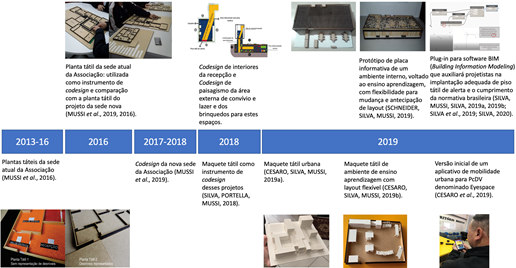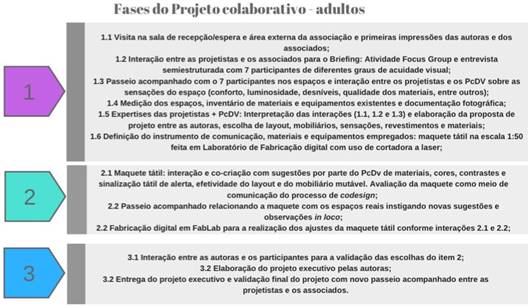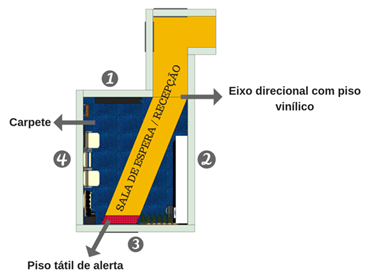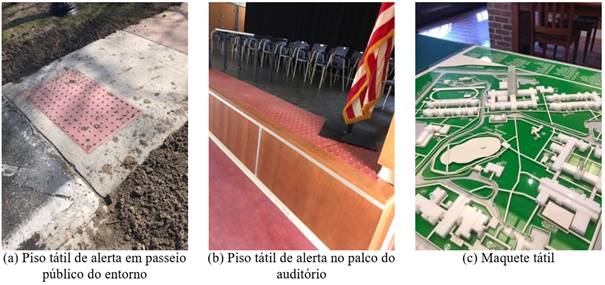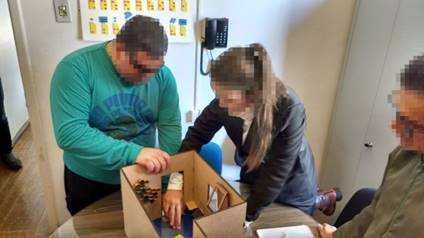Abstract
This paper presents the use of co-design in architecture as a form of social inclusion for Visually Impaired People through a partnership between an association of blind people (community) and the Postgraduate Program in Architecture and Urbanism (Higher Education Institution). This article shows the results of a co-design action, which will assist in the achievement of a broader research goal, aiming to define co-design methods, techniques and tools applied to the inclusion of visually impaired people in the process of architecture, urbanism, landscaping and interior design. This research study reports on two stages of a co-design project: the co-design of a waiting / reception room and a socialising and leisure external area (with the Association’s adults), and the development of two toys for these spaces (with the Association’s children). The research methods chosen were focus groups, the interaction with the tactile model and accompanied tours. The results demonstrate the importance of co-design as a way to include visually impaired people, enhancing their well-being and self-esteem, as they effectively participate in the creation of the environment which they are part of and leave the passive zone that they normally find themselves in during the architectural design process.
Keywords:
Architecture and urbanism project; Visually impaired people; Design process; Co-design; Tactile model

 Thumbnail
Thumbnail
 Thumbnail
Thumbnail
 Thumbnail
Thumbnail
 Thumbnail
Thumbnail
 Thumbnail
Thumbnail
 Thumbnail
Thumbnail
 Thumbnail
Thumbnail
 Thumbnail
Thumbnail
 Thumbnail
Thumbnail
 Thumbnail
Thumbnail
 Thumbnail
Thumbnail
 Thumbnail
Thumbnail
 Thumbnail
Thumbnail
 Thumbnail
Thumbnail
 Thumbnail
Thumbnail
 Thumbnail
Thumbnail
 Thumbnail
Thumbnail
 Thumbnail
Thumbnail
 Thumbnail
Thumbnail
 Thumbnail
Thumbnail
 Thumbnail
Thumbnail
